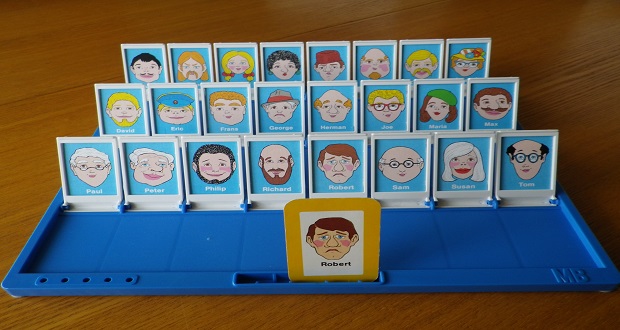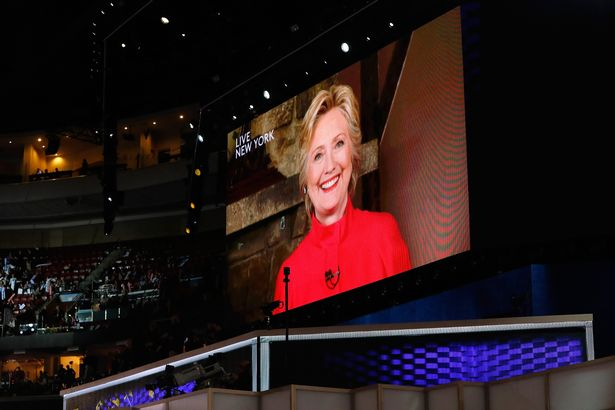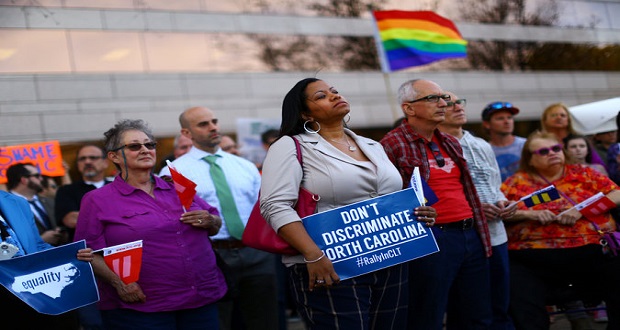Who would have ever thought that the games we played as children could easily translate into some of the issues we experience today as adults. In a video I came across last night on The Dish, Professor Michael Norton, does just that. And it is genius!!!!! (Pardon my exclamation points, I get excited over these things.)
Remember the game “Guess Who?” It was the game where you and a partner had a tray of 12 faces, selected a card that displayed one of those faces, and had to guess which face each other picked by eliminating the other faces using “yes or no” questions. If you aren’t following me, here’s what it looked like:

Well Professor Norton designed a similar game to evaluate the willingness and level of comfort people have when discussing race. He presents 12 faces–6 black and 6 white. One player picks a face for their partner (I’ll refer to them as the “guesser”) to guess using yes or no questions–again just like the original game. One would think that asking “Is the person black?” or “Is the person white?” would be the most logical and easiest way to narrow down to half of the pool, but that was not the case!! Here are the results:
- Nearly half (43%) of the “guessers” did not mention race to narrow down the pool
- If the other player happened to be black, only 21% of guessers mentioned race at all
Now let’s consider… the idea of the game is to win, right? Now, if we really want to increase our chances of winning, one would assume narrowing the pool down as quickly as possible, with specific questions, would be the strategy. But that is not the case here. Why?
So maybe the guessers avoided these race questions as to not come off as biased or appearing to “care” about race, “see color.” (How familiar does that sound?) But in fact, the impact of not asking was the exact opposite. The guessers who avoided asking about race were perceived by their partners as being more biased than those who did ask.
Let’s keep going though, it gets interesting.
Professor Norton conducted this same experiment with children. Older children, ages 9 or 10, were more hesitant to ask about race–as if they had learned that it may not be an appropriate thing to ask. Younger children, however, were not hesitant, and therefore more likely to beat their older opponents. (This is the point that brings it home!)
Somehow, the election of the first Black president, maturation of a multi-cultural Generation Y, and exponential growth of the minority population has created this notion that we are in a “Post-Racial” society. There’s this premise that somehow race no longer matters, it’s a thing of the past, people don’t “see color,” and if you do happen to acknowledge race, you’re racist. This has impeded much needed conversations about race and differences in our society. As such, we have very little conversations about these things within our organizations.
Just like the contenders in this game, organizations want to win. And those organizations who acknowledge differences are better positioned to do just that. In order for an organization to be successful, it takes collaboration, communication, and the ability to navigate cultural differences–especially in today’s global economy. Now more than ever, these conversations need to be had. Seeing one’s “color”, is just the beginning in possibly learning and understanding something that may have been trivial to you or I before. When conversations like this aren’t so taboo, maybe wearing a Dashiki to work or styling ones hair in braids, won’t be as intimidating (but that is another story).
In a nutshell, race, as uncomfortable as a subject it can be, as well as other differences, aren’t meant to go unseen or unacknowledged. They’re meant to be accepted, respected, and understood. Imagine how much we can learn from each other and win by doing just that.
Original Article on the Dish: http://dish.andrewsullivan.com/2013/12/17/does-post-racialism-encourage-racism/



















Thank you for this very useful information. I learned a lot in this webpage. Thank you very much.
Tel U